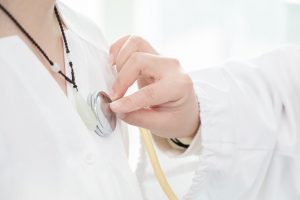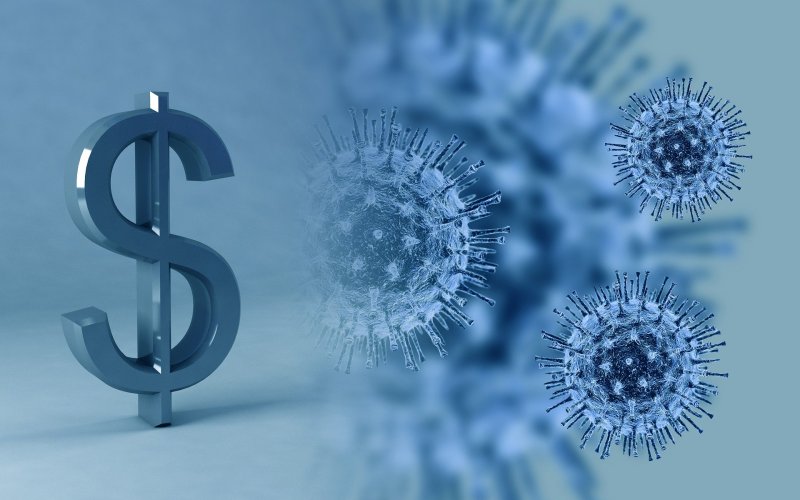 With governments locking down communities to combat the COVID-19 pandemic, health care providers and practitioners scrambled to find ways to deliver care to patients at their homes or residences. CMS relaxed restrictions on providing health care via telehealth, allowing for all Medicare patients to receive care via two-way, audio and video communications, and even via telephone calls notwithstanding that patients may not reside in rural zip codes. Hospitals pivoted to providing services to patients in their homes, again using telehealth modalities or by deploying practitioners to a patient’s home. Skilled nursing facilities also adopted strategies of keeping patients in their homes, deploying needed skilled caregivers to the patient. And while home health services may have hit a lull in the first couple months of the pandemic, services provided by home health agencies soon started to soar. Home health agencies started to become busier than ever, with many providers reporting overall growth due to demand to receive services at home instead of hospitals, skilled nursing facilities or nursing homes.Continue reading
With governments locking down communities to combat the COVID-19 pandemic, health care providers and practitioners scrambled to find ways to deliver care to patients at their homes or residences. CMS relaxed restrictions on providing health care via telehealth, allowing for all Medicare patients to receive care via two-way, audio and video communications, and even via telephone calls notwithstanding that patients may not reside in rural zip codes. Hospitals pivoted to providing services to patients in their homes, again using telehealth modalities or by deploying practitioners to a patient’s home. Skilled nursing facilities also adopted strategies of keeping patients in their homes, deploying needed skilled caregivers to the patient. And while home health services may have hit a lull in the first couple months of the pandemic, services provided by home health agencies soon started to soar. Home health agencies started to become busier than ever, with many providers reporting overall growth due to demand to receive services at home instead of hospitals, skilled nursing facilities or nursing homes.Continue reading
PPP Standing in the Way of Healthcare Mergers and Acquisitions
 By: Susan St. John
By: Susan St. John
The trend that we are seeing affects both buyers and sellers in the health care sector with respect to entities that have received cash infusions from the Paycheck Protection Program (“PPP”) created pursuant to the CARES Act in response to COVID-19. Mergers and acquisitions can come to a significant slowdown, standstill or be terminated altogether if careful planning is not performed to account for the impact the PPP funds received by a healthcare target or seller will have on an anticipated merger or acquisition. While tax and legal considerations have typically followed along with the merger or acquisition and these considerations are important aspects of any merger or acquisition, they have taken a forefront position when it comes to planning for a change of ownership when the healthcare target or seller has received PPP funds.
As we learned earlier, health care entities requested and received PPP funds to sustain them during the public health emergency caused by COVID-19, allowing them to avoid a virtual economic shut-down. These funds were a welcome relief to keep health care entities afloat financially, providing a way to cover certain expenses such as a) payroll costs, b) rent, c) interest on any covered mortgage obligation (which shall not include any prepayment of or payment of principal on a covered mortgage obligation), and d) utilities. Using the PPP funds on these expenses allows for a recipient of the PPP funds to qualify for loan forgiveness under the PPP. That all seemed like welcome relief at the time.Continue reading
HHS to send $20B to healthcare providers: 5 things to know
 By: Zach Simpson
By: Zach Simpson
HHS announced Oct. 1 that it is sending $20 billion in new funding to healthcare providers to help offset financial strain linked to the COVID-19 pandemic.
Five things to know:
1. Healthcare providers who previously received, rejected or accepted provider relief payments are eligible for the new funding.
2. Providers who were previously ineligible to receive relief funds, such as those who began practicing in 2020, can apply for a portion of the new relief aid.
Avoiding HIPAA Violations During COVID-19
 By: Steven Boyne
By: Steven Boyne
The COVID-19 virus has and will probably continue to change the way healthcare providers and business associates interact and help their patients. As many providers are aware, a HIPAA violation is a serious issue, and can cost a healthcare entity large amounts of time and money to respond to any regulatory investigation. Recognizing that the COVID-19 pandemic has strained every corner of the economy and is THE MOST IMPORTANT issue for almost every industry, the federal government has rolled back some HIPAA protections. It is unclear how long these rollbacks will last, and it is possible that some of them may be permanent, but for now healthcare providers and their business associates can take some comfort that they can focus on delivering care and not dealing with overly burdensome regulations and investigations. The major changes include:
- Telehealth. Changes include allowing physicians and other healthcare providers to offer telehealth services across State lines, so State licensing issues should not be a concern. Additionally, Providers are essentially free to choose almost any app to interact with their patients, even if it does not fully comply with the HIPAA rules. The HHS allows the provider to use their business judgment, but of course, such communications should NOT be public facing – which means DO NOT allow the public to watch or participate in the visit!
- Disclosures of Protected Health Information (PHI). A good faith disclosure of such information will not be prosecuted. Examples include allowing a provider or business associate to share PHI for such purposes as controlling the spread of COVID-19, providing COVID-19 care, and even notifying the media, even if the patient has not, or will not grant his or her permission.
- Business Associate Agreement (BAA). As most healthcare providers know, a BAA agreement between a provider and an entity that may have access to PHI is required by law. During the COVID-19 pandemic, the lack of a BAA is not an automatic violation.
Getting Back to a New Workplace Normal
 By: Steven Boyne
By: Steven Boyne
As employers begin to consider opening their offices and bringing back their employees and inviting other people into their offices, such as patients, there are many issues that should be considered and planned for BEFORE the front door is opened.
Quick Legal Advice – COVID-19 is new to everyone, including Government regulators and plaintiff lawyers, so we are all learning as we go along. The best legal advice in these uncertain times is:
- Find out what other similar situated companies are doing, as you may be held to their standards;
- Find checklists and advice from well reputable entities;
- Document your decisions; and
- Communicate.
OPENING YOUR DOOR TO YOUR EMPLOYEES
As an employer you have a responsibility to provide a safe working environment, and as of today it is clear that the following is a minimal list of considerations:Continue reading
More Relief on the Way: H.R. 266 – Paycheck Protection Program and Health Care Enhancement Act Signed by the President
 By: Susan St. John
By: Susan St. John
The newest relief for small business and health care providers was passed by the Senate on April 21st, by the House on April 23rd, and became law on April 24, 2020. This new Act, provides for $484 billion in additional relief to small businesses and healthcare providers. $100 billion of the relief has been allocated to the Department of Health and Human Services and of that amount $75 billion is earmarked “to reimburse health care providers for health related expenses or lost revenues that are attributable to the coronavirus outbreak.” The remaining $25 billion will be used for expenses to research, develop, validate, manufacture, purchase, administer, and expand capacity for COVID-19 test to effectively monitor and suppress COVID-19.
The $75 billion provided under the Act will remain available until expended and will be used to prevent, prepare for, and respond to coronavirus to reimburse necessary expense or lost revenues incurred as a result of COVID-19. However, if a health care provider has already had expenses or lost revenues incurred due to COVID-19 reimbursed from other sources or that other sources are obligated to reimburse (like the CARES Act), any funds received from the $75 billion cannot be used as a “double dip” by that health care provider.
A big difference for health care providers with this Act, is that unlike the CARES Act that provided a direct deposit to health care providers based on Medicare fee for services reimbursement, no application necessary, this Act requires the health care provider to apply for relief funds. Eligible health care providers include public entities, Medicare or Medicaid enrolled suppliers and providers, profit and not-for-profit entities that provide diagnoses, testing, or care for individuals with possible or actual cases of COVID-19 (so as to accommodate the “lost revenues” provision, this could mean any patient treated since January 31, 2020, and is not necessarily limited to patients treated for COVID-19 symptoms without testing confirmation). Health care providers should act quickly and apply for funds as soon as possible as the HHS Secretary will review applications and make payments on a rolling basis. Payment may be a pre-payment, prospective payment, or a retrospective payment as determined by the HHS Secretary. Health care providers must submit an application that includes statements justifying the need of the provider for the payment. The provider must have a valid tax id number (could be an individually enrolled physician). As with the CARES Act, HHS will have the ability to audit how relief funds are expended and must start reporting obligations of funds to the House and Senates Committees on Appropriations within 60 days from the date of enactment of this Act. Reporting will continue every 60 days thereafter.Continue reading
A Few Nuances to the Paycheck Protection Program Established Pursuant to the CARES Act
 By: Susan St. John
By: Susan St. John
The Paycheck Protection Program under the CARES Act (the “Act”) allows a small business to apply for a low interest rate loan to sustain the business during the economic disruption caused by COVID-19. This program focuses on payroll costs as opposed to revenues of the small business. Allowable uses of the PPP loan funds include the following:
- Payroll costs;
- costs related to the continuation of group health care benefits during periods of paid sick, medical, or family leave, and insurance premiums;
- employee salaries, commissions, or similar compensating;
- payments of interest on any mortgage obligation (which shall not include any prepayment of or payment of principal on a mortgage obligation);
- rent (including rent under a lease agreement);
- utilities; and
- interest on any other debt obligations that were incurred before the covered period.
The Act defines payroll costs as follows:
- the sum of payments of any compensation with respect to employees that is a:
- salary, wage, commission, or similar compensation;
- payment of cash tip or equivalent;
- payment for vacation, parental, family, medical, or sick leave;
- allowance for dismissal or separation;
- payment required for the provision of group health care benefits, including insurance benefits;
- payment of any retirement benefit; or
- payment of State or local tax assessed on the compensation or employees; and
- the sum of payments of any compensation to or income of a sole proprietor or independent contractor that is a wage, commission, income, net earnings from self-employment, or similar compensation and that is in an amount that is not more than $100,000 in 1 year, as prorated for the covered period; and shall not include the compensation of an individual employee in excess of an annual salary of $100,000, as prorated for the covered period; taxes imposed or withheld under chapters 21, 22, or 24 of the Internal Revenue Code for the covered period; compensation for employees outside of the US; qualified sick leave wages for which credit is allowed under the Families First Coronavirus Response Act; or qualified family leave wages for which credit is allowed under the Families First Coronavirus Response Act.







